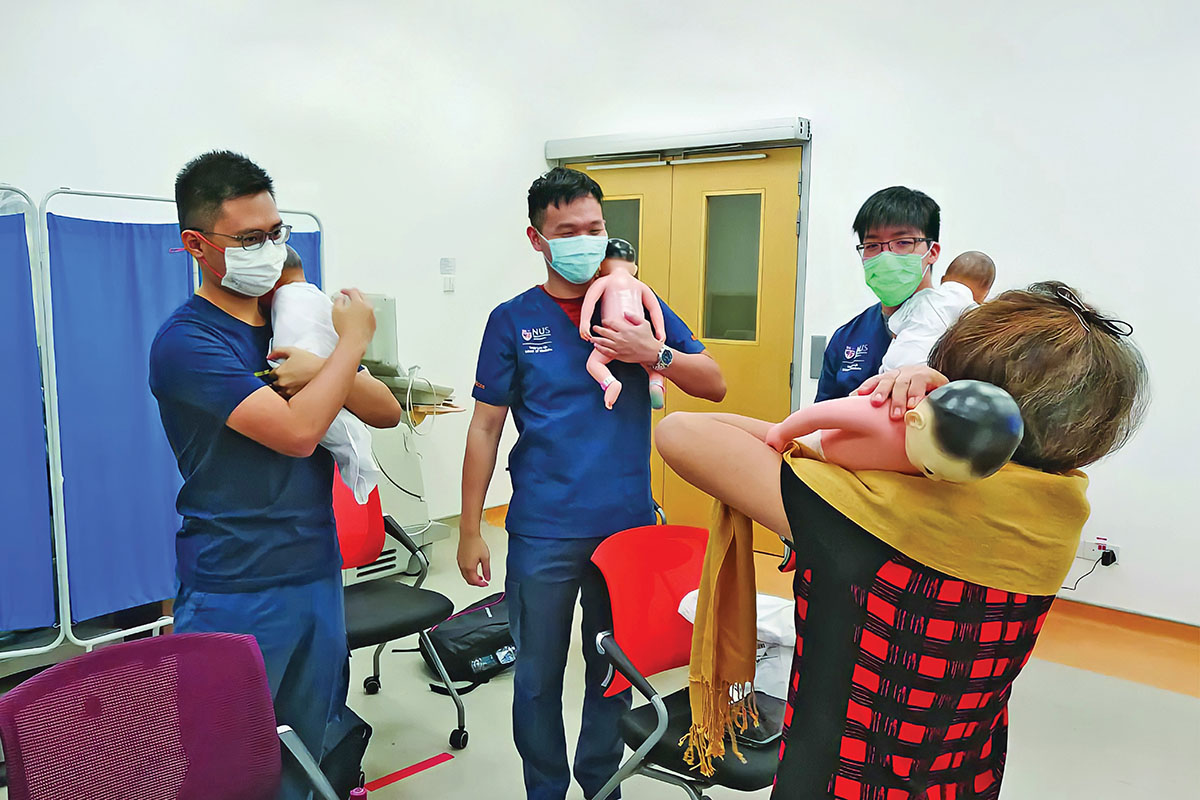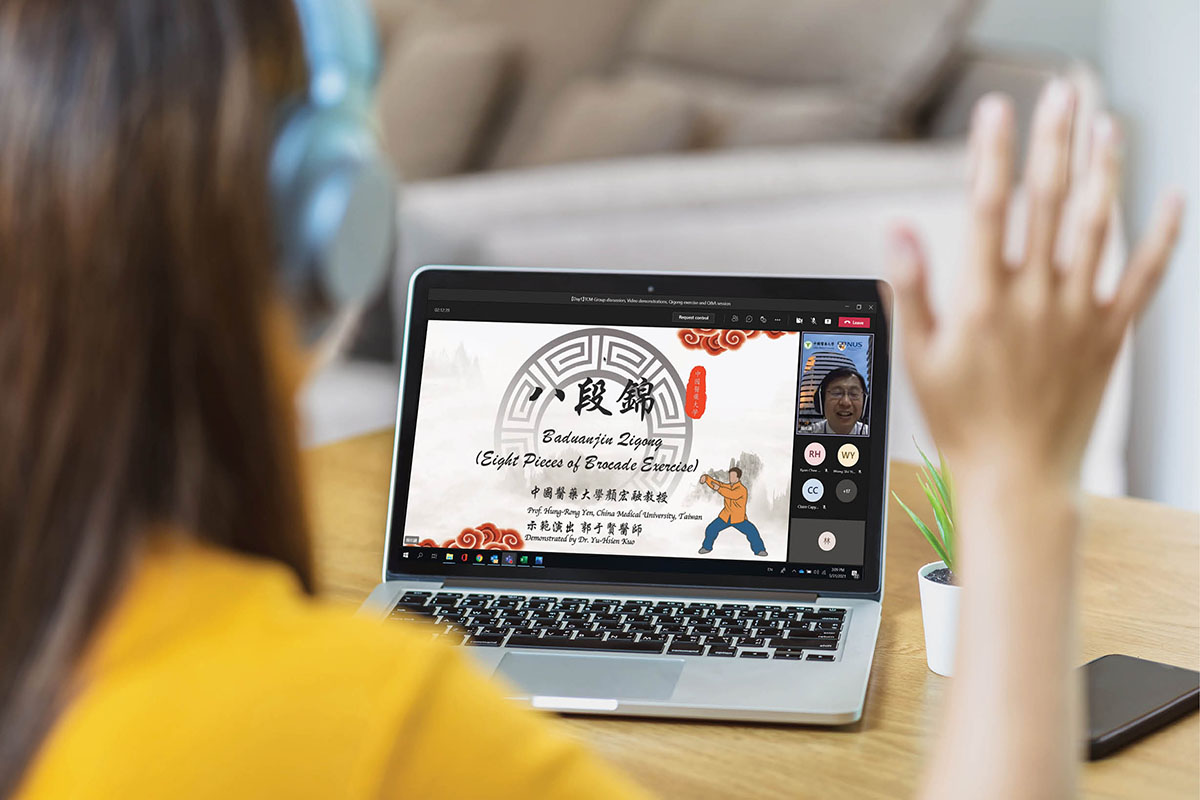
Issue 40 / November 2021
People of NUS Medicine
The Agony and the Ecstasy – A Medical Student Reflects on Her Learning Journey
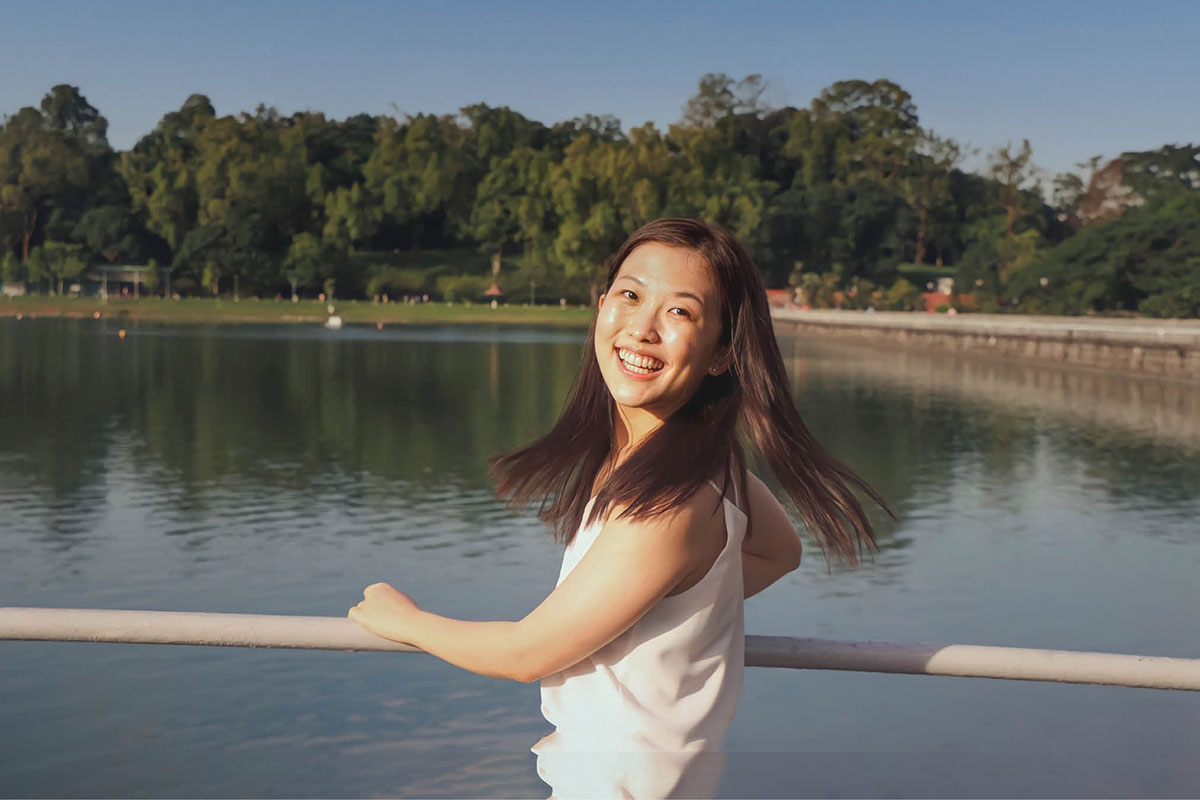
Almost all medical students would have heard this exclamation of disbelief: “Examinations? Again? Didn’t you just finish them a few weeks back?”
riends, half-joking, half-serious, resent our schedules when they try to coordinate group outings or class gatherings. With clinical years and the School of Medicine’s out-of-sync calendar from the rest of the university, it is often difficult to arrange meet-ups with friends.
Learning for the future
In medical school, our intense workload and compacted curriculum mean that we dedicate much of our time to studying. A large part of Medicine is about sitting down with the books and putting in the hours. Familiarity of content only comes with revision and repetition, with years of effort culminating in knowledge integration and internalisation. In addition, Medicine is difficult—not just for the sheer volume of facts to remember (recollect: listing the different branches and sub-branches of the celiac axis) but also the logic of the concepts themselves, which may not be immediately apparent (case in point: distinguishing between the causes of nephrotic and nephritic syndrome). The body’s mechanisms are complex and at times elusive. Not everything is as straightforward or intuitive as imagined, and it takes time to reason and arrive at explanations.
I was 18 years old when I signed the MOH Holdings bond, I don’t think I knew the full extent of what I was getting myself into. It is common to fixate on the final outcome of something, without giving thought to the process leading up to it. I still find it slightly mind-boggling, how you decide what to commit to for the rest of your life—a gargantuan and momentous decision—at such a young age. Because how many of us can say with certainty that we are sure of what we want, who we are, and what we value? In these few years alone, I have changed in more ways than I can imagine.
The study of Medicine is a long journey of mixed feelings. There are times when a nagging voice questions: is this all worth it? Are you sure? While I am kept bright-eyed by the prospect of using my medical training to help patients and journeying with them at their most vulnerable and unguarded, I inevitably also experience moments of stress, fatigue and disillusion. Processing both the joys and the let-downs, I remind myself of what set me on this path in the first place, urging myself to stay faithful to the course. When all is said and done, I do enjoy the learning tremendously, and I cherish the skills and experiences I gain day by day. There is a sense of fulfilment as I chart my milestones—on listening to a patient’s heart and correctly identifying the murmur, or scrolling through radiological investigations on the patient record system and making sense of them.
Learning in medical school carries a heightened sense of purpose, beyond the tedium of memorisation and regurgitation we were so used to in secondary school and junior college. Here, there is an awareness that we no longer just study for ourselves or intellectual edification, but for real patients we will meet in the future. How well I grasp the knowledge now will have an impact on lives when I become a doctor, and the onus is on me to do a good job.
I knew Medicine was going to be hard, consistent work when I wanted to become a doctor, and this is what I chose to commit to when I became a medical student. The struggle is a part of the journey there, with the privilege and trust of practising medicine being earned, not given.
Being a junior doctor
The journey from medical student to doctor is a metamorphosis and unsheathing of sorts, from figuring out how to pronounce the Latin terms of anatomical structures, to being able to clerk patients, come up with diagnoses, and devise management plans on the spot. Eventually, it becomes second nature, a routine and ritual performed deftly under time constraints.
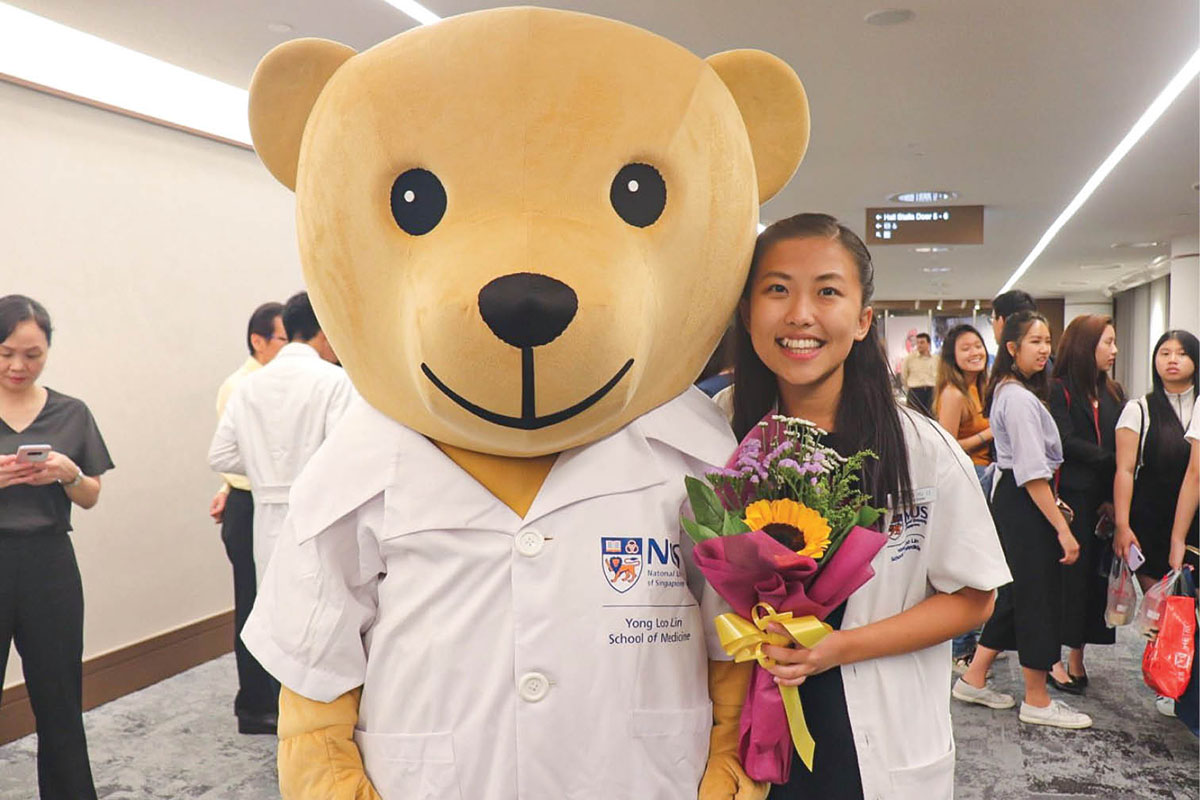
Being inducted into the medical fraternity at the White Coat Ceremony. Image was taken before implementation of COVID-19 safety measures.
Nevertheless, starting out as a junior doctor can be daunting. There is the juggling of clinical learning with on-the-job demands, along with managing inter-collegial relations and being accountable to bosses, surviving overtime hours and multiple calls, while attempting to retain a semblance of normalcy in life outside of the job. There is also the equally critical, but seldom talked about aspect of patient interaction, which can either be a blessing or a terror: delivering bad news, handling delicate emotions, and addressing patient concerns and expectations. While expertise and experience are accumulated over time, the myriad of responsibilities expected of a doctor still overwhelms me, especially when the professional I want to become seems so far away from the medical student I am now.
The doctors of today
With Google at our fingertips, the medical environment we practise in today is a unique one, and so are the demands placed upon doctors. In this day and age, we are more informed yet increasingly challenged: when our patients are as equipped with medical information as we are, the focus shifts from factual recall to creating insight and meaning with information.
The doctor’s task today is no longer knowledge acquisition, but knowledge synthesis and inquiry to create a coherent narrative for each patient. Why do the risk factors and presentation of this elderly gentleman lead to a suspicion of colorectal cancer? If diagnosed, how will his condition affect his life? How will the treatment plan and care change, based on his priorities and goals? Our patients no longer just want to know what, but also why, how, when, and what now?
To answer these, we need to be well-versed in our medical knowledge and clinical reasoning. Narrowing the differentials to arrive at a final diagnosis requires a firm grasp of common and critical conditions, bringing us back to good old conscientious studying.
Medicine as a Science and an Art
More than any machine, the human body is the most intricate of systems: its compartments and cascades, its enzymes and electrolytes kept in perfect homeostasis. Appreciating the human body and its complexities, its inclinations yet inconsistencies, has convinced me of the wonders of creation—profoundly and irrefutably. It has helped me to avoid taking good health for granted, and to treasure time spent with the people I love. Moreover, knowing the detrimental effects of my own unhealthy habits has prompted me to lead a healthier life, advising those around me to do the same.
Prior to university, we were introduced to the Arts and the Sciences as dichotomies: you were either an Arts student or a Science student. The humanities were described to be quaint and fanciful, while the sciences were declared as utilitarian, unembellished and impartial. Yet, as I progress through my education, I am realising how so many of these lines are blurred, with our man-made distinctions being arbitrary and imprecise. It does not have to be a choice of either/or. There is beauty in the unfurling of the trigeminal layers of the embryo, as there is truth in the Freudian theory of the id, ego, and super-ego—our bodies are made up of equal parts fact and imagination.
Essentially, the practice of Medicine is about humanity—the entire premise of the humanities being to help us understand and relate to each other. I can think of nothing more human than witnessing a family come together in the face of grief, or helping a couple work through the implications of a genetic disorder on their plans to conceive. The eventual decision to let go of a patient when all possible therapies have failed, when all that sustains life is a fleet of beeping machines and a tangle of wires—I wonder how difficult it must be. I imagine the conversations that transpire, the flux of emotions and moral awakenings. Death, the white elephant lurking behind every prognosis, diminishes and humbles us as we realise how futile we are in the face of nature’s laws and rhythms—doctors and patients alike.
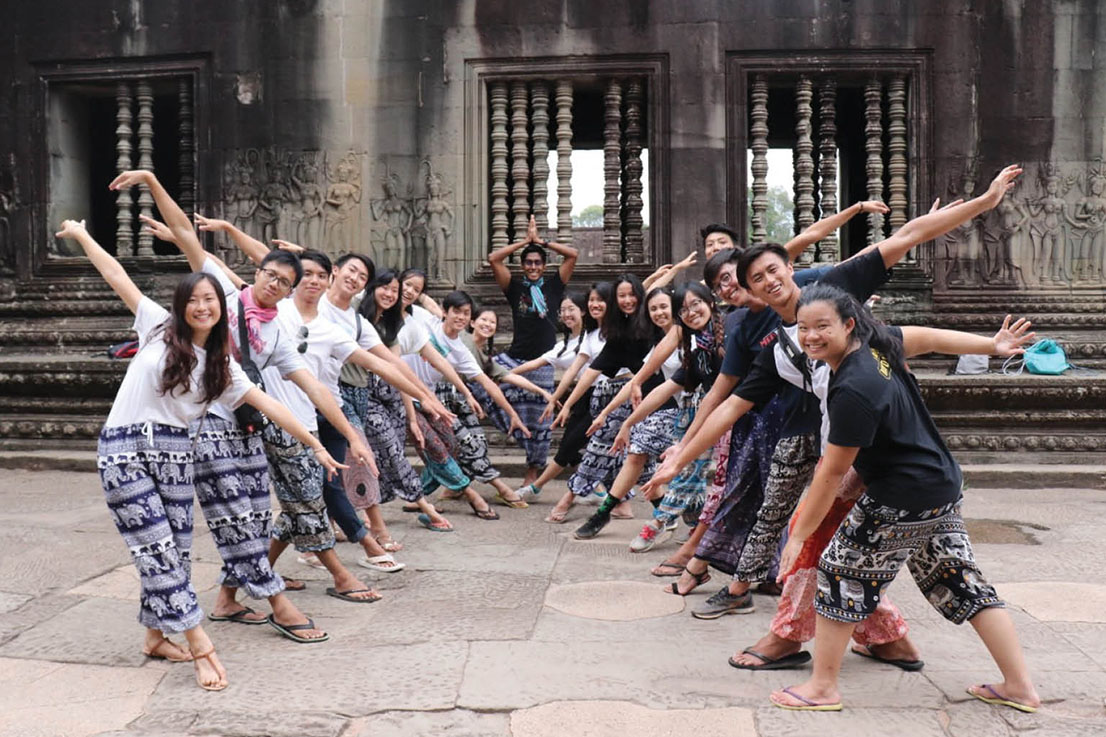
Striking a pose in front of Angkor Wat’s temples on a Project Lokun trip. Image was taken before implementation of COVID-19 safety measures.
Ambiguity in Medicine
Stepping into the realm of Medicine is like walking through a very small door, into an unfamiliar and entirely breathtaking world, much like Alice tumbling into Wonderland. In medical school, we first acquaint ourselves with what is normal, before inquiring what is abnormal. Our textbooks illustrate the construct and make-up of the body, explaining to us the consequences and complications when it breaks down. We examine the body progressively: from regional anatomy to systems-based physiology, to more minute details of histology, biochemistry, and microbiology. We then explore pathology to unravel disease processes and their manifestations, and later on pharmacology, where we tackle drugs and their therapeutic effects.
As medical students, we struggle to keep afloat in the sea of knowledge we are thrown in, never knowing how far away the shoreline is. With an expansive and boundless curriculum, there will always be more conditions to learn about, and more about a particular condition to learn about, with the constant pressure to know as much as possible. At times, I am unable to see the immediate relevance of every piece of information I am learning. It frequently feels like playing a game of catch-up with memory—reading about one condition and forgetting most of it by the next day, but having to move on to a different condition to keep pace with revision by then. Simultaneously, we grapple with discerning between what is tested in theory for examinations versus what is clinically relevant in practice, and reconciling the two.
Ambiguity, perhaps, is inherently a part of Medicine. Despite the great strides and progress we have made in modern medicine, there remain enigmas we are unable to unravel. We contend with disease pathways that have not been completely elucidated, and conditions for which there are no curative remedies. Much of what is done today in clinical practice relies on a reverse-engineered process of decision-making, whereby management algorithms are based upon evidence from clinical trials.
Apart from written knowledge, however, functioning as a doctor requires the translation of theory into approaches, with the development of diagnostic algorithms and illness scripts. In the clinic, the patient invariably presents as a symptom complex, not a diagnosis. The patient does not say: “Doctor, I have acute pancreatitis!”, he says: “Doctor, I have a sharp pain in my belly.” Even then, history-taking and physical examination may be unrewarding at times, and the exact diagnosis can only be concluded based on investigations or even surgical exploration. If medical school is to prepare us for a life of Medicine, it might do us well by exposing us to ambiguity from the onset.
New beginnings
Medical school encompasses a series of transitions: from junior college to university, preclinicals to clinicals, and then medical school to housemanship. On my first day of school, I was as uncertain and nervous as I imagine some of my juniors might be now, on the cusp of their medical careers, the first of five years of medical school.
“The doctor’s task today is no longer knowledge acquisition, but knowledge synthesis and inquiry to create a coherent narrative for each patient… Our patients no longer just want to know what, but also why, how, when, and what now?”
As I leave my preclinical years behind, I enter my third year of medical school, a year awaited with much trepidation yet eagerness. Ward life was what we imagined when we were restless in our lecture seats, wondering what the amassing of all this knowledge was preparing us for. The thought of applying what we have learnt so far to the wards and witnessing Medicine in action is exhilarating. As we rotate through General Surgery, may we finally recognise the significance of our surface landmarks and abdomen anatomy; as we elicit the drug history of an elderly patient in the polyclinic, may we finally comprehend the dangers of polypharmacy and strive to reduce it for our own patients. The transition from preclinical to clinical years will surely be intimidating, but it brings us one step closer to what we signed up for when we applied to medical school: morning rounds, hands-on procedures, and the human touch so sacred and central to the practice of Medicine.
Parting words
During orientation, I asked my seniors how I could make the most out of medical school. “Run your own race,” one of them said, adding on: “And don’t forget to take it all in; smell the roses once in a while.”
It took me time to realise what he meant.
Two years in, and I can’t say I know all there is to how to survive and thrive in medical school. What I have gleaned, however, is a deepened understanding of the human body, lessons with professors and doctors who have inspired me with their wisdom and good humour, and friendships which I know will last me a lifetime. In these two years, I have taken on roles and responsibilities that grew me as a leader and a team-player, and embraced opportunities I previously would have shied away from. Through these, I have emerged more resilient, assured, and giving.
In these years, I have laughed and cried, loved wholeheartedly and been deeply broken. There were days when I was spent, burying my head on the table of the medical library before pulling out my books again, instances where I fell short of the expectations of myself and others, guilt-ridden for not giving more, yet already on the brink of my capacity. On greater occasions, though, I have been graced by the kindness of loved ones and friends. Along the way, I was also encouraged by small and unexpected victories.
I hope to continue growing, learning, and extending towards the light.

